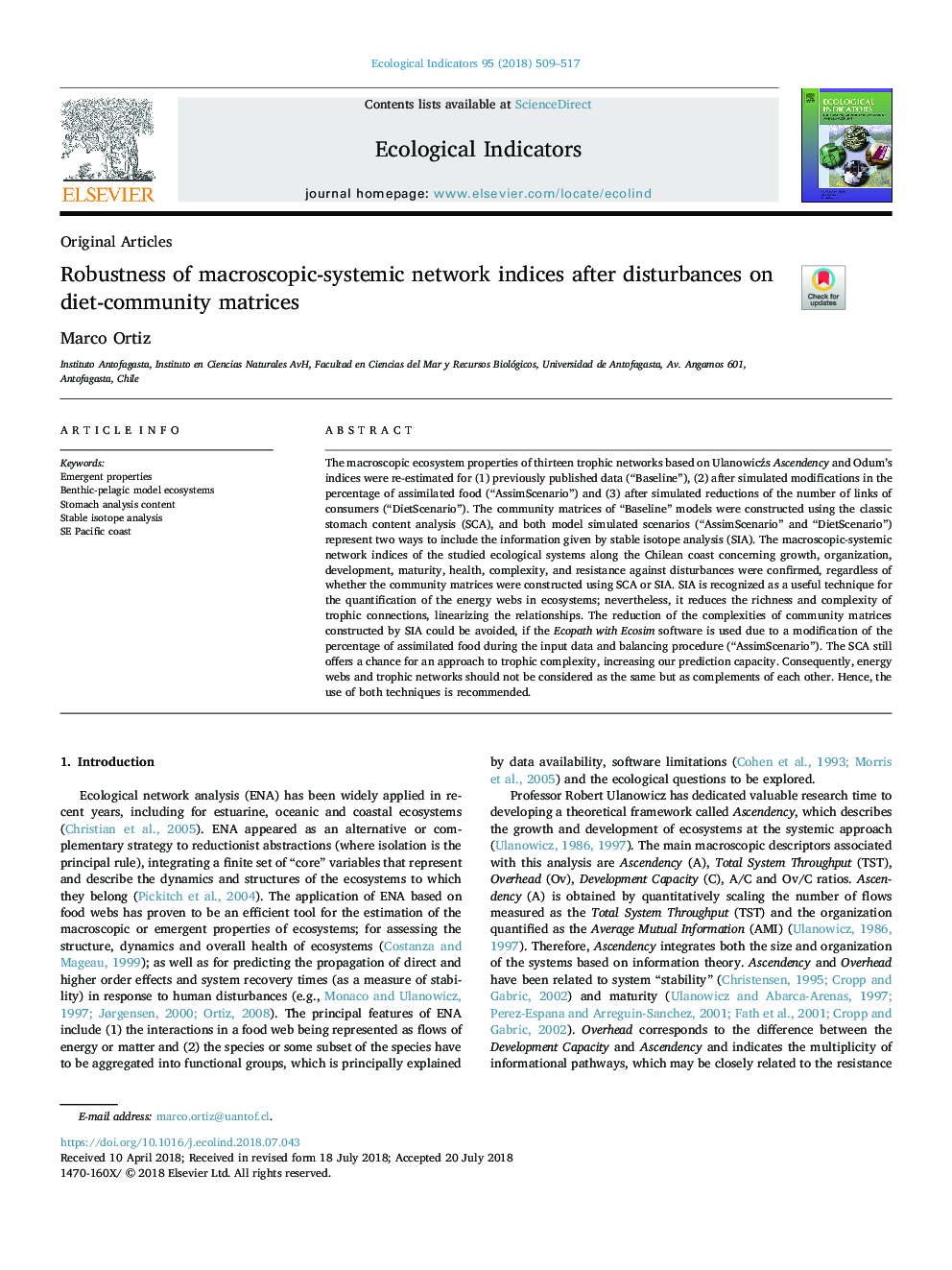| Article ID | Journal | Published Year | Pages | File Type |
|---|---|---|---|---|
| 8844990 | Ecological Indicators | 2018 | 9 Pages |
Abstract
The macroscopic ecosystem properties of thirteen trophic networks based on Ulanowicźs Ascendency and Odum's indices were re-estimated for (1) previously published data (“Baseline”), (2) after simulated modifications in the percentage of assimilated food (“AssimScenario”) and (3) after simulated reductions of the number of links of consumers (“DietScenario”). The community matrices of “Baseline” models were constructed using the classic stomach content analysis (SCA), and both model simulated scenarios (“AssimScenario” and “DietScenario”) represent two ways to include the information given by stable isotope analysis (SIA). The macroscopic-systemic network indices of the studied ecological systems along the Chilean coast concerning growth, organization, development, maturity, health, complexity, and resistance against disturbances were confirmed, regardless of whether the community matrices were constructed using SCA or SIA. SIA is recognized as a useful technique for the quantification of the energy webs in ecosystems; nevertheless, it reduces the richness and complexity of trophic connections, linearizing the relationships. The reduction of the complexities of community matrices constructed by SIA could be avoided, if the Ecopath with Ecosim software is used due to a modification of the percentage of assimilated food during the input data and balancing procedure (“AssimScenario”). The SCA still offers a chance for an approach to trophic complexity, increasing our prediction capacity. Consequently, energy webs and trophic networks should not be considered as the same but as complements of each other. Hence, the use of both techniques is recommended.
Related Topics
Life Sciences
Agricultural and Biological Sciences
Ecology, Evolution, Behavior and Systematics
Authors
Marco Ortiz,
